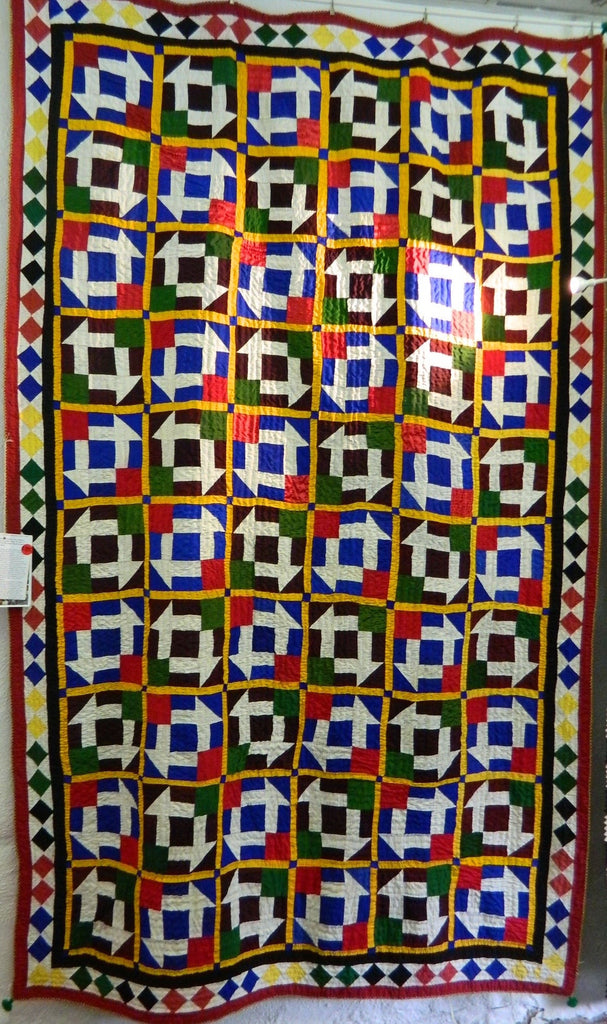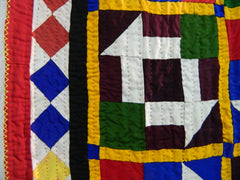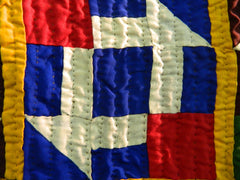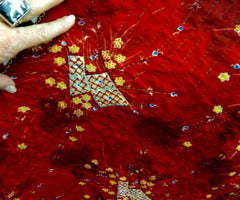




PAKISTAN, Tharparker desert, Sindh,
Circa late 20th century large ralli quilt chosen from a dowry shown to me in the remote mud-hut village of Tooh. Personally purchased in from Hindu Meghwar tribal member. 220cm x 126cm
Large double bed quilt, cotton, polycotton and some satin patches completely hand-stitched patchwork in traditional Sindhi colours of black, brown, deep red, forest green, yellow, white and royal blue. Very similar to the American 'Barn Door' design with the addition of the red or green corner squares on opposing sides of the barn door. Some references state that there are similarities between Sindhi and US patchwork designs due to the influence of American missionaries who worked in this area in the 19th century however tombs at ancient Sindhi archaeological sites show carved designs in triads of patchwork designs.
This quilt is 10 patches long and 6 patches wide bordered in thin yellow strips with small royal blue square corners. The whole quilt is bordered with a thin strip of black with an outer border of repeating diamonds in coloured pairs and a final thin strip of ox blood red. The quilt is quilted with brown running stitch, has a red/orange and apricot printed asking and thin wadding. A hand-sewn zig-zag stitch in yellow is sewn around the outer edge. A wool tassel is sewn at each corner. No holes or stains.
The village of Tooh in Sindh is one of the most remote regions of Pakistan and is approximately 10 hours drive south east of Karachi. On this trip I was accompanied by 2 policemen with machine guns who travelled in front in either a jeep or on a motorcycle. As I passed through each district the police changed. It was an extremely complicated process to gain permission to travel out into these remote districts. We travelled into a grey sandy desert and to get to the village we (myself, translator and village representative, Dev Vasalai) got out and walked through the sandhills until we came to a small, walled village consisting of mud huts with grass roofs. The Meghwar women are renown for their exquisite embroidery, patchwork and embroidery and these patterns have been handed down from mother to daughter for many, many generations. These women are talented artisans whose work tells of identity, community and landscape.

